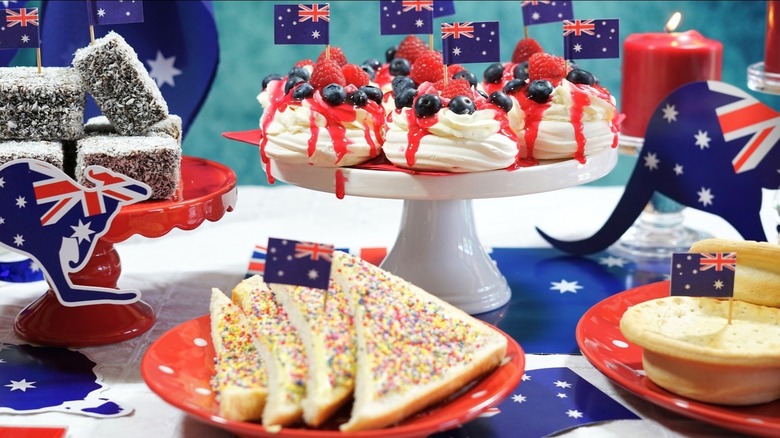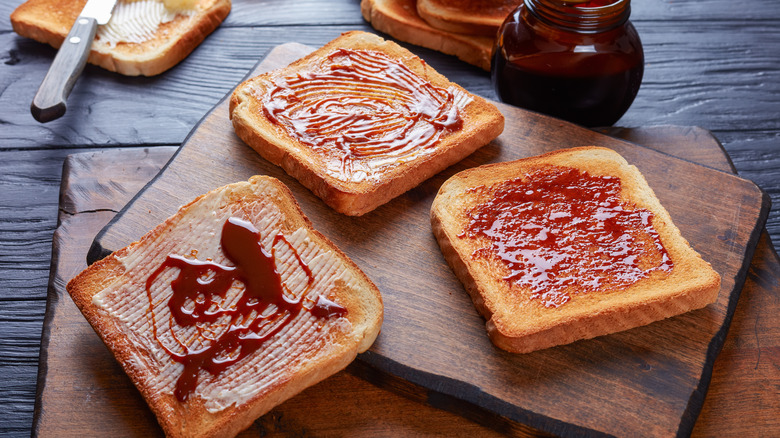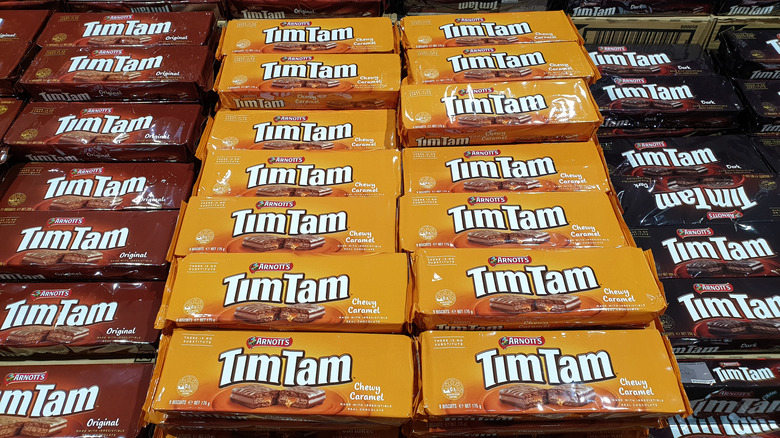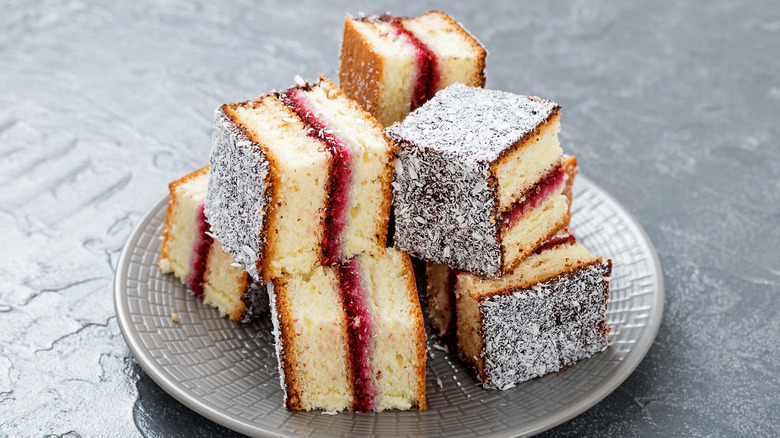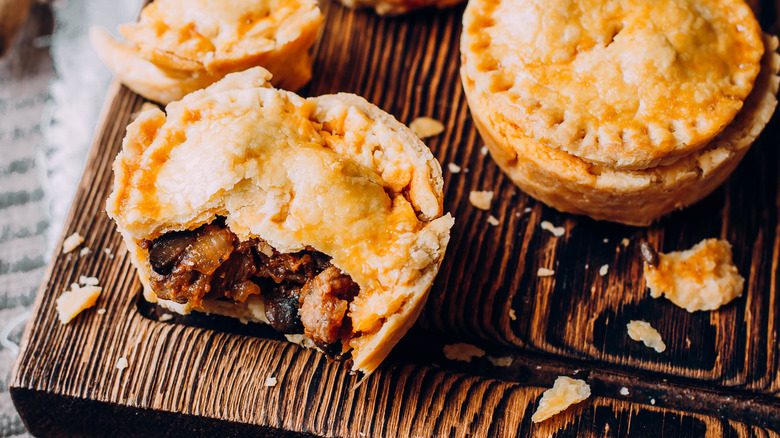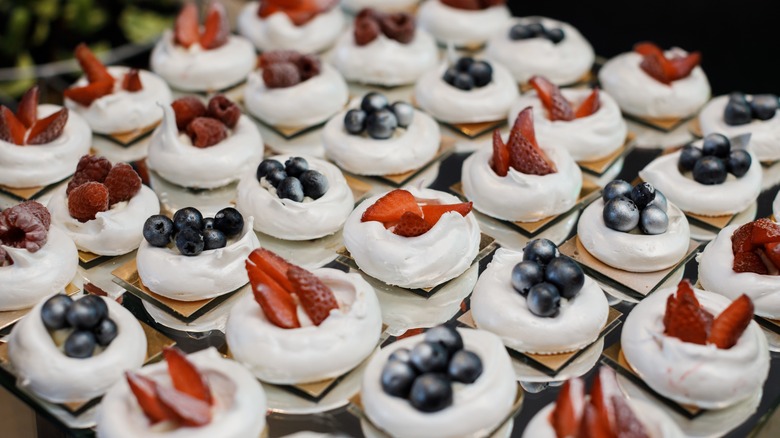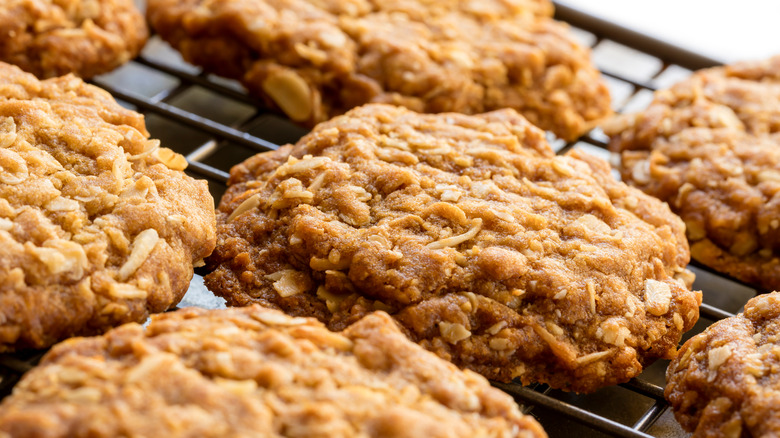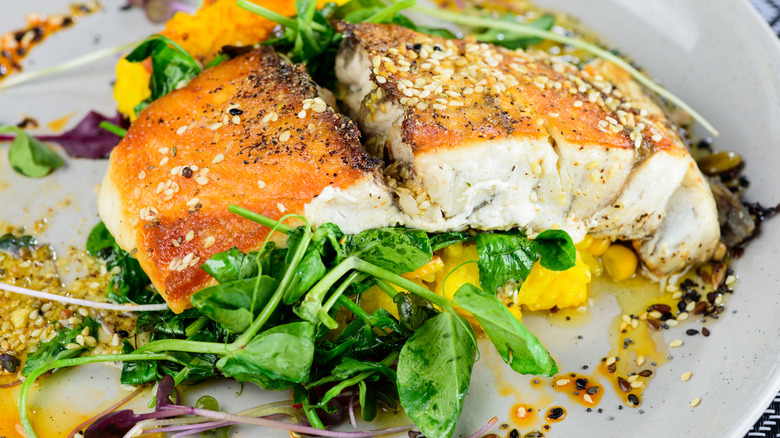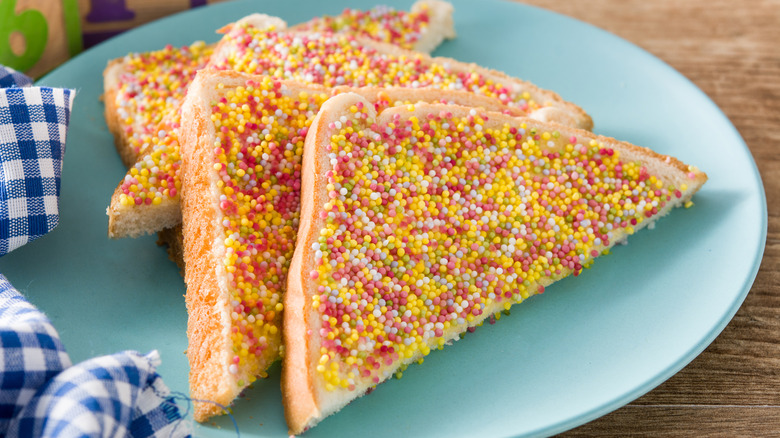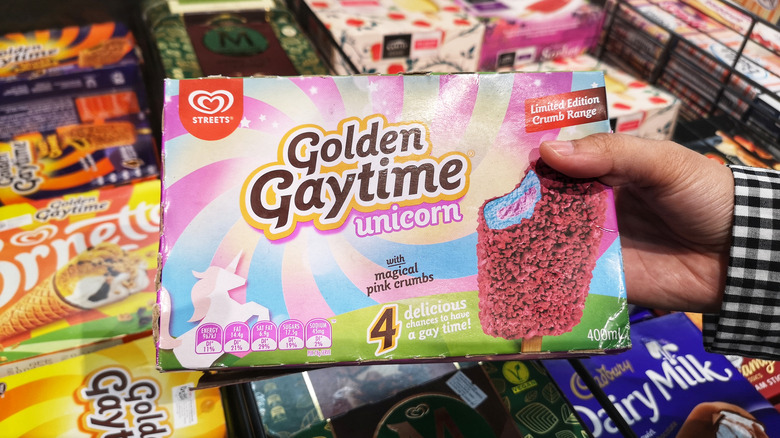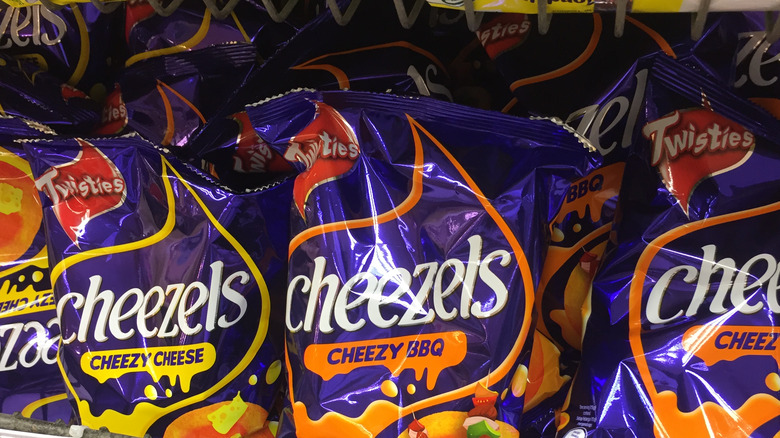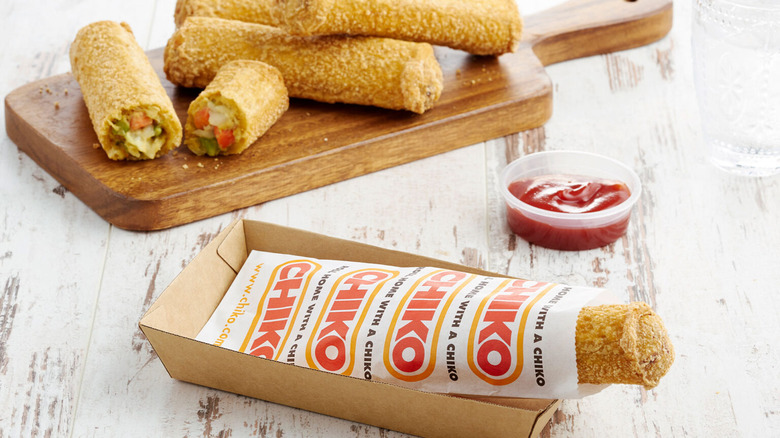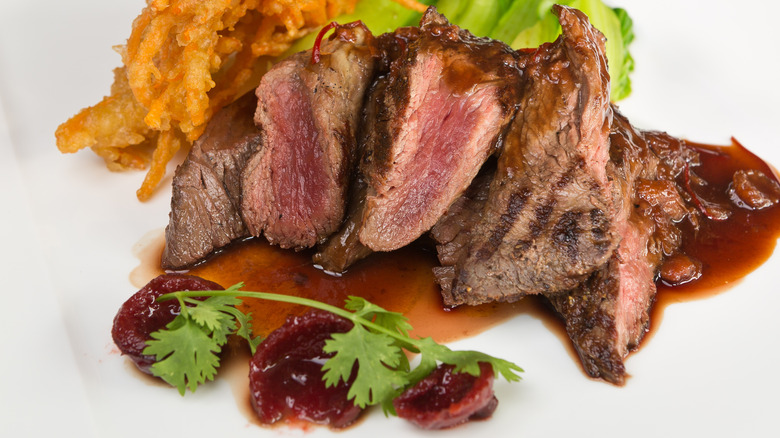12 Classic Australian Foods You Need To Try Before You Die
Lots of countries claim to be a melting pot of cultures and traditions, but nowhere is that idea really more true than in the nation of Australia—an incredibly diverse country made up of Indigenous populations, European settlers, immigrants, expats, refugees, and visitors from throughout Africa, Asian, and South America—literally every pocket of the globe, both big and small.
With that unique fusion of cultures, identities and individuals, it's no surprise that Australia's food scene and culinary traditions are just as varied and special as its population is, combining locally sourced ingredients, Aboriginal tastes, hearty British flavors, and Asian-influenced ingredients and cooking techniques into a one-of-a-kind edible wonderland.
More than just shrimp on the barbie, Australia is home to some of the most incredible, unexpected, and flavorful foods on the planet—foods you won't see (and can't experience) anywhere else.
Here are twelve of our favorites — a mix of wildly delicious main courses, indulgent snacks, and spectacular desserts — that you truly must try before you die.
1. Vegemite
Whether you first heard about this classic Australian staple in the Men at Work song "Down Under," when Paul Hogan offered a jar of the stuff to his new fling Sue as a love offering in the cult classic film "Crocodile Dundee", or when Oprah famously tried a few bites on her 2010 trip to Oz, it's clear Australians have a long-lasting love affair with the strong, salty yeast spread known as Vegemite. The umami-esque paste with a slightly bitter aftertaste is a breakfast classic within the country and often enjoyed with toast or crackers.
Created in 1922 by a chemist named Dr. Cyril P. Callister who was tasked with finding a way to use up some of the brewer's yeast leftover from Australia's rampant beer production, "Vegemite" got its name following a nationwide competition—and quickly spread in popularity to become one of Australia's most beloved condiments.
For Vegemite novices, the key to trying the thick jam—and enjoying it—is starting with a small amount so as to not overpower your tastebuds and pairing it with butter (which helps to balance the strong flavor), or coffee or tea, both of which compliment its natural, savory one-of-a-kind flavor.
2. Tim Tams
Not to be confused with the matzo cracker known as the Tam Tam, the Tim Tam is one of Australia's most popular pre-packaged cookies—and a unique treat every lover of sweets needs to experience at least once.
These oblong chocolate-covered cookies — or biscuits, as they are called down under — are packed with a creamy chocolate filling, giving them the perfect combination of ooey, gooey milk chocolate creaminess plus crisp, dark chocolate-infused brittle cookie crunch, all wrapped up in a rich chocolate shell.
Named after a horse that won the Kentucky Derby in 1958, Tim Tams were introduced in 1964 as Australia's version of a popular U.K. cookie known as the Penguin.
Although a celebrated snack when downed on their own, the cookie has also inspired a trend called the "Tim Tam Slam," designed to make the treat even more delectable. To perform the "Slam," snackers nibble the diagonal corners off two ends of the Tim Tam and then use the resulting "straw" to slurp up a few sips of hot tea or coffee. As you drink, the hot liquid turns the cookie's chocolate filling into a hot lava explosion of cocoa flavor.
3. Lamingtons
Ask a room full of people what they like in a dessert and you're bound to hear some common responses: Cake! Chocolate! Or "anything coconut!" Well, Lamingtons—the national cake of Australia—combine the best of all those favorites into one singular flavor sensation: light and fluffy squares of vanilla-flavored sponge cake coated in a thick layer of chocolate icing and then rolled in crunchy, nutty shards of dried coconut.
With a flavor profile like that, it's no wonder this iconic dessert is adored by Australians of all ages and backgrounds. Well, except for one. In a truly ironic twist, the man the cakes were created for and named after—Lord Charles Lamington—is said to have hated them, calling them "those bloody poofy woolly biscuits."
Lord Lamington served as the governor of Queensland, an Australian state covering the continent's northeast corner, from 1896 to 1901. And as one leading story detailing the history of the Lamington goes, one day one of the lord's cooks accidentally dropped a piece of sponge cake they had prepared into a bowl of chocolate icing. To cover the mistake, the chef rolled the now chocolate-coated cake in dried coconut ... and the rest is history. The Lamington was born!
Today, Lamingtons are so popular they're not only prepared daily in countless bakeries around the country, they also inspired the creation of Lamington-flavored ice cream, Lamington doughnuts, and even Lamington-flavored beer.
4. The Meat Pie
Not all iconic Australian foods fall on the sweet side. Take the hearty and rustic meat pie, a traditional Aussie dish consisting of a savory pastry filled with chopped meat and gravy.
This staple of the local cuisine is usually about the size of a large flattened palm. Its outer crust is a flaky, butter pastry dough baked to golden perfection. Inside, you'll find finely chopped meat—usually beef or lamb—plus a thick gravy and sometimes vegetables. Think of meat pies as a bit like an American pot pie, except less juicy and meant to be eaten on the go, without any dishes or silverware. Meat pies are a favorite at music festivals and sporting events because they are so portable and easy to pack around.
While meat pies are as popular in Australia today as hot dogs and hamburgers are in the U.S, the pies themselves are believed to have originated in Europe and were brought to the country by British immigrants in the 19th century. Meat pies date all the way to the days of ancient Greece and Rome, where simple doughs made with flour and water were stuffed with meat and cooked under hot coals. Flash forward a few hundreds years and while ovens have now replaced fire pits, the meat pie itself remains relatively unchanged!
5. Pavlova
Somewhere in the light and fluffy fantasy land of desserts, living halfway between a giant marshmallow and the classic French Macaron, you'll find the Australian pavlova. These delicate, airy cakes consist of a meringue-based outer shell, and a creamy slightly softer core. Decadent on their own, they're made even more delicious with the addition of hearty whipped cream and slices of fresh fruit such as kiwi, strawberries, and passionfruit, which are typically added just before the pavlova is served.
While bakers in both Australia and New Zealand argue over whose shores the pavlova started on, the one thing everyone can agree with is that it was named after the famous Russian ballerina Anna Pavlova, who toured both countries extensively in the 1920s. The name was an homage to both her lighter-than-air dance moves and to her billowing lace tutu, which food historians say resembled the creamy layers of meringue used to create the dessert before it's placed in the oven and baked.
While pavlovas may look fancy, and are a showstopper at holidays and special occasions, the good news is that they're easy enough for even a novice baker to master, and require just a handful of basic ingredients.
6. Anzac biscuits
Based on name alone, you might think an "Anzac biscuit" sounds like some sort of historic, old-school snack from the past. And you'd be right! These crunchy treats are more than a hundred years old, and have a storied history that begins on the battlefields of World War I. Made from a classic combination of rolled oats, flour, sugar, and golden syrup, these "biscuits" occupy the strange no-man's-land between cookie and cracker, possessing characteristics of each.
The first-ever Anzac biscuits were baked in around 1915 by a government military group known as the Australian and New Zealand Army Corps—or Anzac for short. Originally nicknamed "soldiers' biscuits" or "Anzac crispies," the earliest versions of this military staple were served as a substitute for bread for men who were going to war or already on the battlefield. When stockpiles of food were low, the biscuits were even sometimes crumbled up and used as a sort of breakfast "porridge" by battle-weary troops.
When the war ended, production of Anzac biscuits (as they had ultimately come to be known) continued, with the recipe for the cookies improving to include previously rationed eggs and butter. Today, production of these classic biscuits is still overseen by the Australian military. And while many people eat Anzacs because they authentically enjoy their unique, nutty flavor, just as many locals dine on the biscuits as a means of paying tribute to the sacrifices made by soldiers during the war.
7. Barramundi
In the U.S., most fish eaters primarily stick to basics like salmon or tuna. But in the island nation of Australia—where fish raised and caught in local waters are plentiful—the fish of choice for many is the barramundi (or Asian sea bass, as it is known to some).
Popular for its mild buttery flavor, flaky texture, and ample levels of protein and healthy Omega-3 fatty acids, barramundi can be prepared and eaten in a number of different ways: grilled or barbecued with fresh herbs or a basic citrus marinade; pan-fried with breadcrumbs for a crispy coating; baked with fresh lemon; poached in a creamy broth; or even added to a flavorful curry. Many Australian chefs also serve barramundi raw in local versions of sushi, sashimi, and ceviche.
Although the fish is versatile and can be served in countless ways, many Australians prefer it over other fish for another reason as well: its sustainability. Barramundi is one of the few types of fish out there that can be raised easily in large-scale fish farms, making it just as good for the environment and the planet as it is for the plate.
A monster fish capable of growing to more than five feet in length, and weighing in at over 100 pounds, the barramundi also has special importance to Australia's Indigenous population, who believe it was specially created by their mythical Rainbow Serpent—a powerful spirit that rules the region and created all within it.
8. Fairy bread
Think of your favorite birthday party growing up: you likely had balloons and streamers, loads of presents, and a mountain of birthday cake and ice cream. Well, Australian children's birthday parties are a lot like that too—except before the cake and ice cream is served, parents also tend to serve another sugar-packed appetizer: fairy bread!
Never heard of fairy bread? You may be surprised to know you likely already have all the essential ingredients to make the stuff already in your kitchen. All you need is some bread, butter, and a carton of rainbow sprinkles. That's right—the classic Australian dessert known as fairy bread is actually nothing more than white bread topped with butter and then doused with loads and loads of rainbow sprinkles — or as the Aussies call them, "hundreds and thousands."
Although nobody knows when fairy bread actually originated, Scottish writer Robert Louis Stevenson notably mentioned it in a 1885 poem, and by the 1920s and '30s, it had already become entrenched in Australian culture as a quick, simple and affordable treat loved by children and adults alike and ideal for birthday parties and gatherings.
Want to make your own? Traditional fairy bread is made from slices of basic white bread, but some people prefer whole wheat or sourdough instead. For sprinkles, traditionalists use French nonpareils—the tiny round sprinkles sold in a variety of colors. Try a few variations and see which shapes and flavor combinations best suit your celebration tastes!
9. Golden Gaytime ice cream bars
Like our previous entry, the name "Golden Gaytime" may bring about a snicker, but that's OK—this classic Australian ice cream treat has been serving up smiles for generations, ever since it was first introduced to the country by the Streets Ice Cream company in 1959. Created as a premium ice cream being sold at an affordable price, Streets named their bar—which is made up of a mixture of toffee and vanilla ice cream coated in chocolate and then dunked in chunks of honeycomb cookie crumble—"Golden Gaytime" as a symbol of the joy and happiness they wanted customers to feel when the bit into a bar for the first time.
By keeping prices for the bar low and the quality of ingredients used to make it high, the company wanted to make an in-demand product that was accessible to the masses. And the strategy paid off.
Golden Gaytime is widely considered to be one of the most popular ice cream flavors on the continent. It combines the classic flavors of vanilla and chocolate with the nutty toffee crunch of cookie crumbles in a satisfying bar that instantly brings about feelings of summer, relaxation, and happiness. The exact so-called "Golden Gaytime" that the bar's creators set out to capture! And an innuendo they are still happy to playfully tease to this day. The tagline on a four-pack box of the ice cream bars? "Four delicious chances to have a gay time." Indeed!
10. Cheezels
The illegitimate love child of a Frito and a Cheeto, Australian Cheezels are ring-shaped corn snacks which have been coated in a layer of cheese powder. And locals go wild for them!
Created by Smith's Snackfood Company in the 1970s as a way to use up some excess corn reserves in the company's warehouses, Cheezels have been a favorite among snack enthusiasts ever since. True "Cheeze" heads love the unique interplay of the artificial cheese puff-like cheese flavoring combined with the savory satisfying crunch of the heart corn ring. And just like Cheetos, Cheezels are also known and celebrated for leaving that tell-tale orange cheese residue on your fingers as you dig into a bag of the circular snacks.
Because of their fragile structure, Cheezels are generally sold in a distinctive cone-shaped cylindrical bag. This unique container helps to keep the Cheezels from being crushed or smashed, and also makes them easier to carry around and share with others.
And that's something that isn't changing any time soon. In recent years, the Cheezel empire has only continued to expand. Cheezels now come in a variety of flavors including chicken, BBQ, and sweet chili. The corn snack has also become a popular topping or ingredient for other classic comfort foods, including burgers, nachos, mac-and-cheese and fried chicken.
11. The Chiko Roll
Leave it to those crafty Australians to find a way to take something that was already delicious and make it even better. Meet the Chiko Roll—the Aussie version of the traditional Asian spring roll. It's bigger; has a thicker, crispier fried shell; and packs about twice the amount of filling but flavorwise, the two are incredibly similar. Both contain a mixture of meat and cabbage, carrot, celery, and onion. Chiko Rolls also contain added barley and beef tallow or fat, designed to add heartiness and heft as well as helping to ensure the roll is extra crispy when it emerges from the deep fryer.
As the story goes, the Chiko Roll was created by an Australian entrepreneur named Frank McEncroe in the 1950s. He was looking to capture the flavor and texture of the spring roll, while also making something bigger and more fulfilling that could be eaten and enjoyed with one hand at outdoor rugby, cricket, and soccer matches. (Why one hand? So you could enjoy a cool beer in the other, of course!)
Originally dubbed a "Chicken Roll," McEncroe decided to change the product's name to "Chiko" to make it sound more exotic. His decision was sound—Chiko Rolls quickly exploded in popularity and were even one of the most widely enjoyed snacks at the 1956 Olympic Games in Melbourne, where they were advertised with drawings of a sexy woman straddling a motorcycle who has since become known as the "Chiko Chick."
12. Kangaroo
No culinary visit through the vast and amazing local foods of Australia would be complete without one final Aussie treat—the "other" red meat ... kangaroo!
Although this uniquely Down Under delicacy has been a part of the Indigenous Australian diet for thousands of years, it gradually gained acceptance as a food source for other populations with the arrival of European settlers in the late 1800 and early 1900s. Flash forward to today—ten years after the Australian government officially declared kangaroo meat fit for human consumption—and kangaroo is popular and widely consumed because of its unusual flavor (slightly gamey with a hint of nutty sweetness), its lean and tender almost fat-free texture, and—like the barramundi—because of its incredible sustainability.
Many environmentalists appreciate that the meat requires less feed, water, and land than other forms of livestock. Kangaroos also live freely in the wild and are not farmed, making them a more ethical and humane meat option as well.
Want to try some? Consider ordering kangaroo steak. Much like steak from a cow, kangaroo is typically marinated with herbs and spices and then pan-fried or cooked over the grill. Kangaroo burgers are served either plain or topped with the usuals like cheese, bacon, lettuce, and tomato.
Or, for a bit more exotic taste of 'roo, consider trying barbecued kangaroo sausages, kangaroo Bolognese, kangaroo kebabs, kangaroo chili or even a big bowl of kangaroo stir-fry, a classic in many Chinese take-out shops. What are you waiting for? Hop to it!
